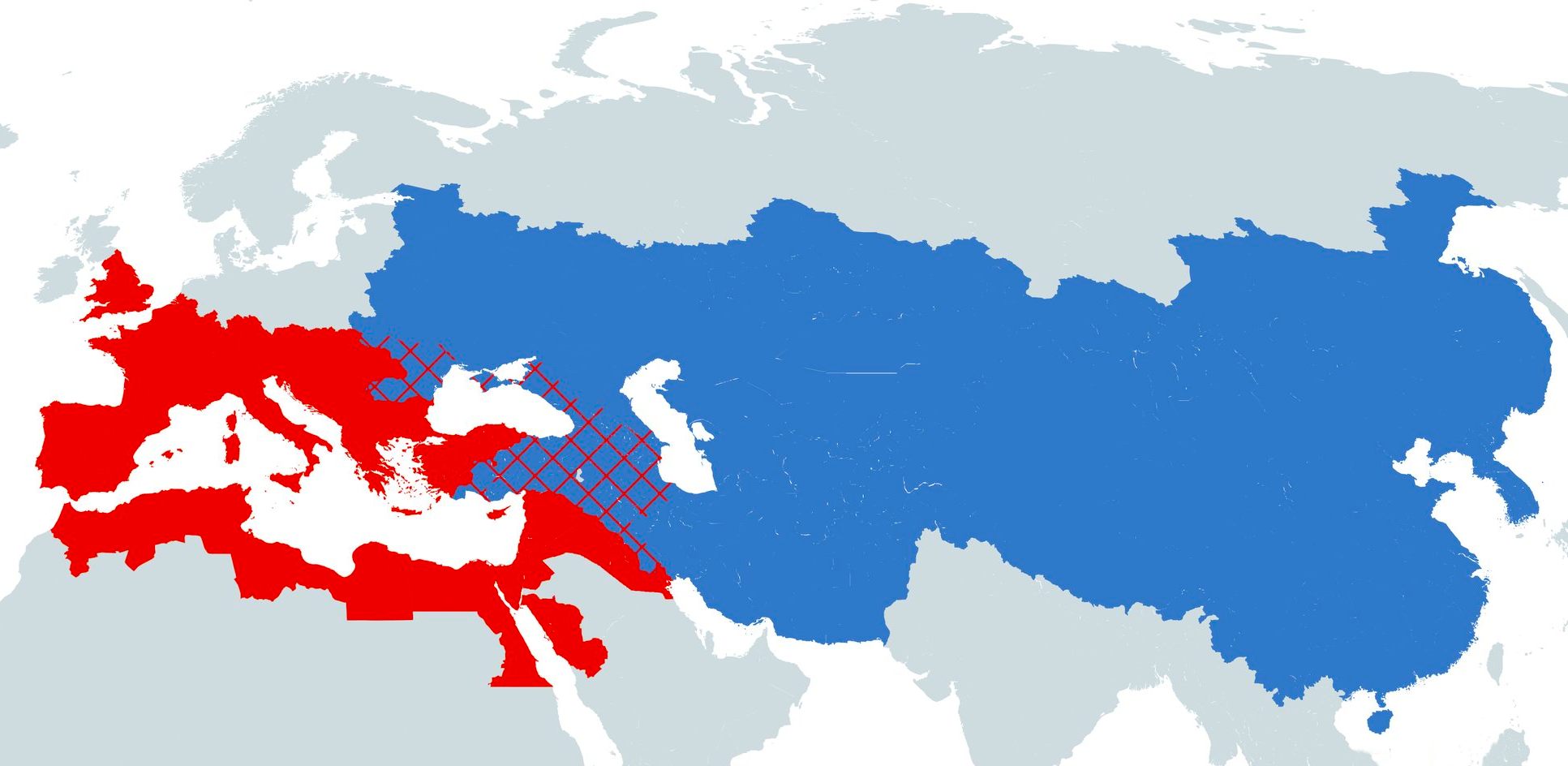Map by Reddit user GalXE106
Looking at this map, you’re seeing something extraordinary: two of history’s most powerful empires superimposed across Eurasia.
The red represents the Roman Empire at its greatest extent under Emperor Trajan around 117 CE, while the blue shows the Mongol Empire at its peak in the late 13th century.
The crosshatched area? That’s where their territories actually overlapped, though separated by more than a thousand years.
Rome: Masters of the Mediterranean
The Roman Empire built its power through incredible engineering, sophisticated law, and military discipline. At its height, Rome controlled approximately 5 million square kilometers, stretching from Britain to Egypt and from Spain to modern-day Iraq.
What made Rome special wasn’t just conquest but consolidation. They built roads that connected distant provinces, established cities that still thrive today, and created administrative systems that influenced governance for centuries.
The Romans excelled at turning conquered peoples into Romans themselves. Through citizenship, language, and culture, they created a unified identity across incredibly diverse populations. This wasn’t just empire building; it was civilization building.
The Mongols: Speed Across the Steppes
The Mongol Empire tells a different story. In less than a century, Genghis Khan and his successors created the largest contiguous land empire in history, covering roughly 24 million square kilometers. That’s nearly five times the size of Rome at its peak.
The Mongols succeeded through unmatched mobility, superior military tactics, and a pragmatic approach to governance. They were master horsemen who could cover vast distances quickly, and they adopted a meritocratic system that promoted talent regardless of tribal origin.
Unlike Rome’s cultural assimilation, the Mongols often allowed conquered peoples to maintain their customs and religions, as long as they paid tribute and didn’t rebel.
Different Worlds, Different Strategies
These empires rarely get compared because they operated in different eras and environments.
Rome thrived in the Mediterranean climate with its agricultural wealth and coastal trade routes. The Mongols mastered the steppes and connected the Silk Road, facilitating trade between East and West like never before.
Rome lasted for centuries in various forms, influencing law, language, and culture permanently. The Mongol Empire fragmented relatively quickly after its peak but left an indelible mark on Eurasian history, genetics, and culture.
Why This Matters Today
Understanding these empires helps us grasp how power, culture, and governance have shaped our modern world. The legal systems, urban planning, and infrastructure concepts from Rome still influence us. The global trade networks and cultural exchanges pioneered by the Mongols set precedents for our interconnected world.
Both empires prove that success comes in different forms, and that lasting influence isn’t always about size or duration alone.
Help us out by sharing this map:
